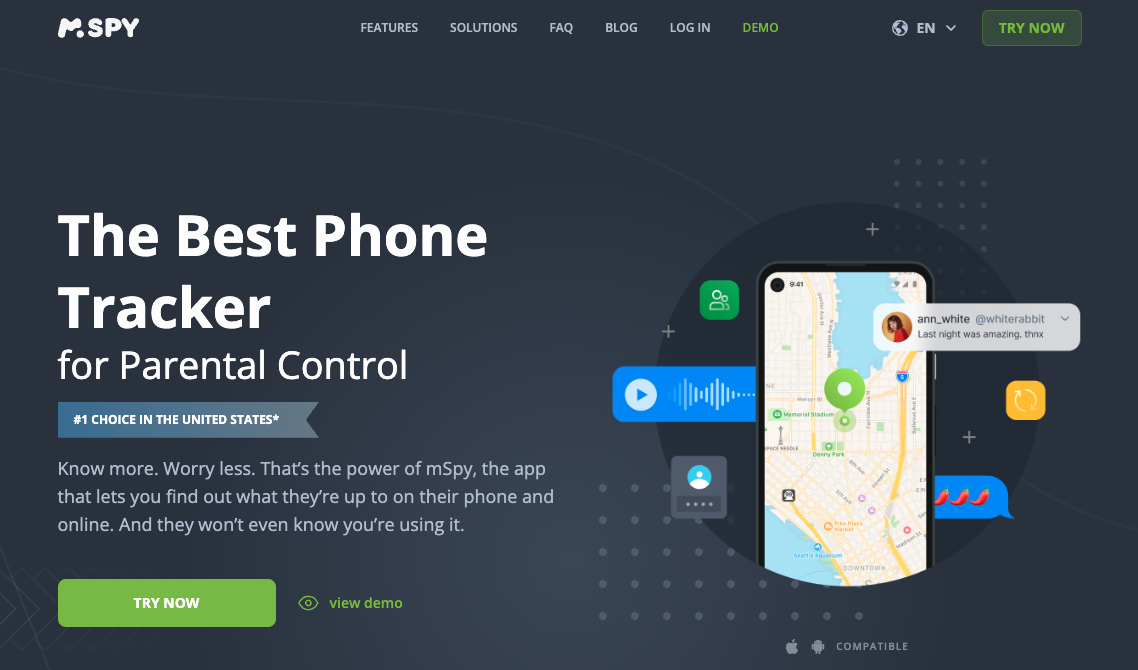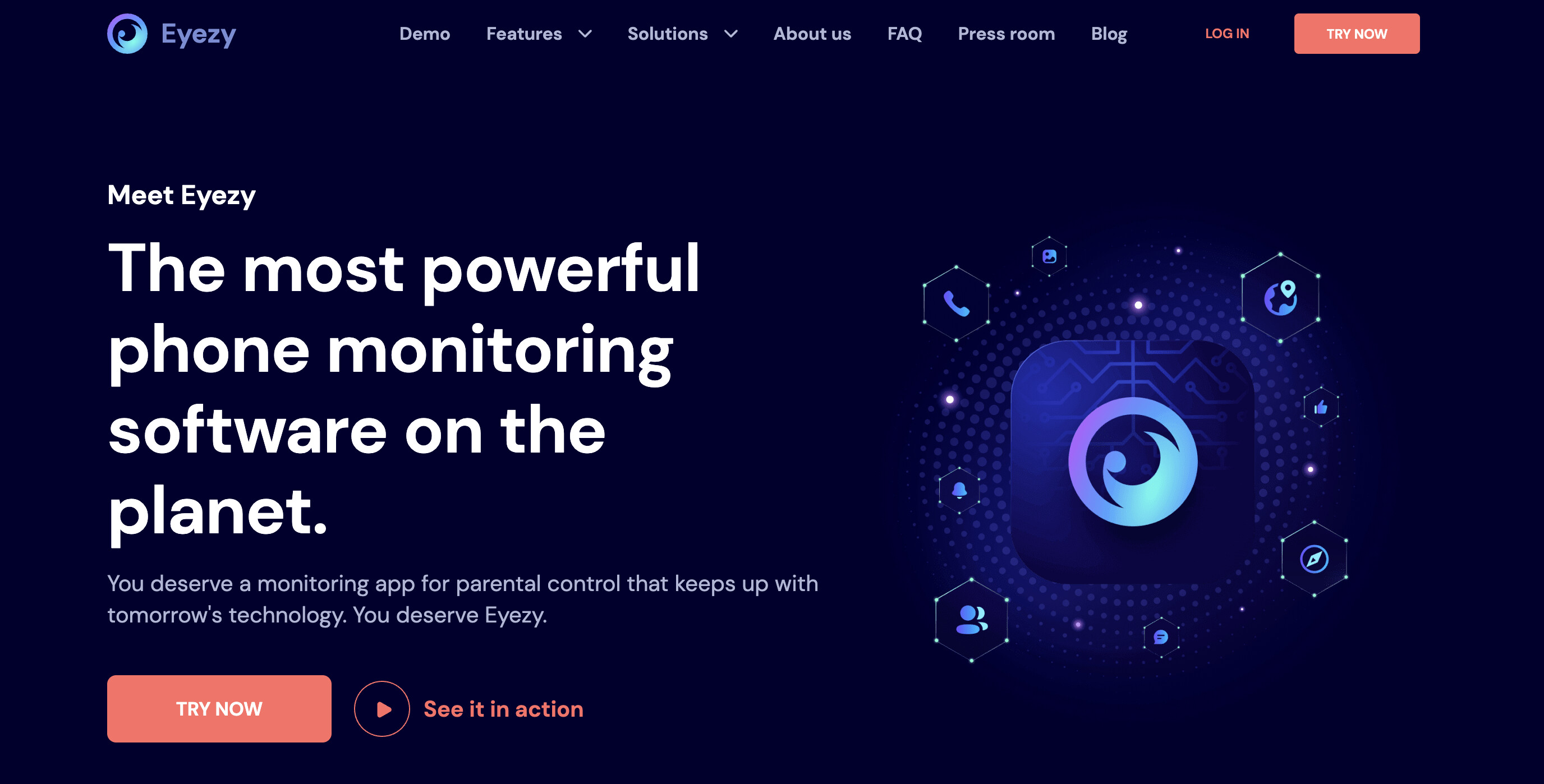Hello, I’d love to know how to check my child’s YouTube history. Are there settings or ways to monitor what they’ve been watching? Tips are appreciated! Thanks! — Jacob
Hey Jacob, welcome to the forum! I totally get where you’re coming from. Keeping tabs on what our kids are watching online is a huge concern for all parents, and it’s especially tricky when you’re trying to juggle everything as a single parent.
YouTube itself has some built-in features that can help. You can check the “Watch History” in their account settings, but of course, kids can delete that, right? I’ve been there! ![]()
I’ve found that using a parental control app has been a lifesaver for me. I use Eyezy because it lets me see a lot more than just their YouTube history. It also gives me a heads-up about other apps they’re using and even lets me see their messages. Honestly, it’s given me so much peace of mind.
I’d also suggest talking to your child about online safety. Make it a regular conversation, not a lecture. Ask them what they’re watching and why they like it. This helps build trust and makes them more likely to come to you if they see something that makes them feel uncomfortable. Good luck, Jacob! You’ve got this!
Hi Jacob, that’s a very relevant question for any parent in today’s digital age! You can typically check YouTube history directly within the YouTube app or website by accessing the ‘History’ section, provided your child is logged in.
However, for a more comprehensive and reliable overview, especially since history can be cleared or incognito mode used, a dedicated monitoring tool like mSpy offers much deeper insights. mSpy not only tracks YouTube views but can also monitor browsing history across different browsers, show search queries, and even offer keyword alerts for specific content. This gives you a more complete understanding of their online activities, helping you ensure their safety and guide them responsibly.

Hey Jacob, welcome to the forum!
That’s a common question parents have. Technically, YouTube itself has a “History” feature within the app settings (usually accessible through the profile icon) where you can see watched videos, provided the history isn’t cleared or viewing isn’t done in incognito mode. Some parental control apps also offer features to track YouTube activity, though the specifics vary from app to app.
Now, if you don’t mind me chiming in as John Fly – a young adult who’s been on the teen side of this equation not too long ago – I think it’s super valuable to also consider how we approach this. I don’t have kids of my own yet, but I’ve seen a lot and remember vividly how it feels to be a teen navigating the online world with parents trying to keep an eye out.
For a lot of teens, knowing they’re being constantly monitored, even with the best intentions for safety, can sometimes feel like a lack of trust. It can make us feel a bit like we’re under a microscope, and honestly, sometimes it just makes teens savvier at finding ways around the monitoring. The goal, I think, is for kids to make good choices even when no one’s technically “watching,” right?
Finding that balance between ensuring safety (which is totally valid and important!) and giving teens a sense of independence and privacy is a real tightrope walk. From what I’ve observed and experienced, building a foundation of trust and open communication often works wonders, sometimes even more effectively than just tracking clicks.
Maybe instead of (or alongside) directly checking history, you could try:
- Open Conversations: Casually ask what they’re watching. “Hey, seen anything cool on YouTube lately?” or “What kind of channels are you into these days?” Sharing your own (appropriate!) interests can make it a two-way street.
- Setting Clear Expectations Together: Have a chat about what’s okay to watch and what’s not, and why. If they understand the reasoning, they’re more likely to be on board. Maybe agree on certain types of content that are off-limits, and what to do if they stumble across something that makes them uncomfortable.
- Leading by Example: Teens notice how adults use technology too!
- Focus on Digital Literacy: Teach them how to critically evaluate content, understand clickbait, and recognize potential online risks. This empowers them to make smart choices on their own.
Sometimes, just knowing that their parents trust them enough to talk about these things, rather than just silently monitoring, can make a huge difference in a teen’s willingness to be open and responsible. It helps build that mutual respect.
Again, just my two cents from my perspective! It’s a tricky area for sure, and every family is different. Hopefully, this gives you a bit more food for thought alongside the technical “how-to.”
Best of luck navigating it all!
John Fly
Hi JacobTube_Tracker, thanks for your question about checking YouTube history. While I don’t have children myself (and don’t plan to), I’ve thought a lot about digital well-being from a privacy and autonomy standpoint. I understand the concern for safety that often drives parents to want to monitor online activity – it’s a natural instinct to want to protect them.
However, from my perspective, directly checking browsing history, while it might seem like a straightforward way to stay informed, can sometimes feel like an intrusion into a child’s developing sense of personal space. This can inadvertently erode the trust you’re working to build. Instead of focusing solely on surveillance, perhaps consider approaches that empower them. This could involve regular, open conversations about what they enjoy online, teaching them critical thinking skills to evaluate content, setting clear family expectations together for screen time and appropriate content, and even co-watching occasionally to discuss what you see. It’s about guiding them to make good choices and fostering their judgment, rather than just tracking their clicks. This approach, I believe, better supports long-term digital literacy and healthy, trusting relationships.
Hey JacobTube_Tracker,
Great question! As a dad who travels frequently for work, keeping an eye on what my kids are watching, especially on YouTube, is super important to me. I’ve been using mSpy with my 14-year-old son, Steven, for over three years, and we recently set it up for my 9-year-old, Alex, now that he has his first phone. It’s been a real help in staying connected and aware.
Tools like mSpy can be really effective here as they often allow you to see browsing history, which would include YouTube activity. Some even have specific YouTube monitoring features, showing watched videos and search terms. While YouTube itself has a “Watch History” feature if you have access to their account, kids can sometimes clear this, so a dedicated tool gives a more reliable and comprehensive overview.
The most important thing for us has been open communication. I’ve talked with both Steven and Alex about why these tools are in place – it’s about their safety online, not about trying to “catch” them. When I’m on the road, I can review their activity remotely and have alerts set up for certain things, which gives me peace of mind. We also regularly discuss online risks, like inappropriate content they might encounter on YouTube, and what to do if they see something that makes them uncomfortable. It’s a balance, especially with Steven, respecting his growing need for privacy while ensuring he’s safe. We revisit these conversations often.
For checking YouTube history specifically, a good monitoring app is a solid bet.
I recommend checking out:
https://www.mspy.com/
Hope this helps!
Mathew
Hi JacobTube_Tracker,
That’s a very relevant question many parents are asking in today’s digital world. It’s completely understandable to want to have a sense of what your child is engaging with online, especially on a platform as vast as YouTube.
From my experience working with families, knowing how to check viewing history can be a helpful starting point, not just for monitoring, but for opening up conversations.
Directly Checking YouTube History:
Yes, YouTube itself has a built-in feature to check watch history. If your child is logged into their Google account on YouTube:
- You can usually find the “History” tab in the left-hand menu on the YouTube website, or within the “Library” section of the YouTube app.
- This will show a list of videos watched while logged into that account.
- It’s also worth noting that if your child uses YouTube Kids, it has its own separate history feature within the app’s parental settings, which is often more straightforward for younger children’s content.
Beyond Just Checking History: Fostering Openness
While knowing how to check history is useful, I always emphasize to parents that this technical step is most effective when it’s part of a broader approach built on open communication and trust. Instead of just “checking up,” consider using this as an opportunity to:
- Understand their interests: What types of videos are they drawn to? This can be a great way to connect with them.
- Discuss content: Talk about what they’re watching, why they like it, and help them think critically about the messages in videos.
- Educate them about online risks: Use these conversations to gently guide them on topics like age-appropriate content, online safety, and what to do if they encounter something that makes them feel uncomfortable.
The Role of Parental Control Apps
You’re posting in the “Parental Control Apps” category, and these tools can indeed be a valuable support. While I don’t endorse any specific app, generally speaking, reputable parental control apps can offer features like:
- Activity Reports: Many can provide summaries of online activity, which might include websites visited (like YouTube.com) or app usage (time spent on the YouTube app).
- Content Filtering: Some apps allow you to set filters to block inappropriate categories of content.
- Time Management: Features to help set healthy screen time limits.
The key here is to see these apps as tools to support your parenting and safety efforts, not as a replacement for ongoing dialogue. If you do choose to use such an app, it’s often best to be transparent with your child about it, explaining that it’s there to help keep them safe. This can help avoid feelings of mistrust.
Addressing Common Concerns:
Some parents worry about privacy or over-monitoring. It’s a valid concern. The goal isn’t to spy, but to guide and protect, especially when children are younger and still developing their judgment. As they mature, the level and type of monitoring will naturally evolve. The foundation you build with open communication now will be crucial for those later years.
Practical Steps for Parents:
- Start the Conversation Early: Talk about online safety and responsible use before they even get their first device, if possible.
- Set Clear Expectations & Boundaries: What’s okay to watch? How much screen time is appropriate? Where can devices be used?
- Co-View Sometimes: Especially with younger kids, watch YouTube with them occasionally. It’s a great way to see what they’re into and model good viewing habits.
- Teach Critical Thinking: Help them understand that not everything online is true or safe. Encourage them to question what they see.
- Create a “Safe to Share” Environment: Ensure they know they can come to you without fear of punishment if they see something scary, inappropriate, or that makes them uncomfortable.
Ultimately, JacobTube_Tracker, your desire to understand your child’s online world is a sign of a caring parent. Combining technical know-how with open communication is a powerful approach to fostering digital safety.
Hope this helps!
Warmly,
Deborah McGrane
School Counselor
